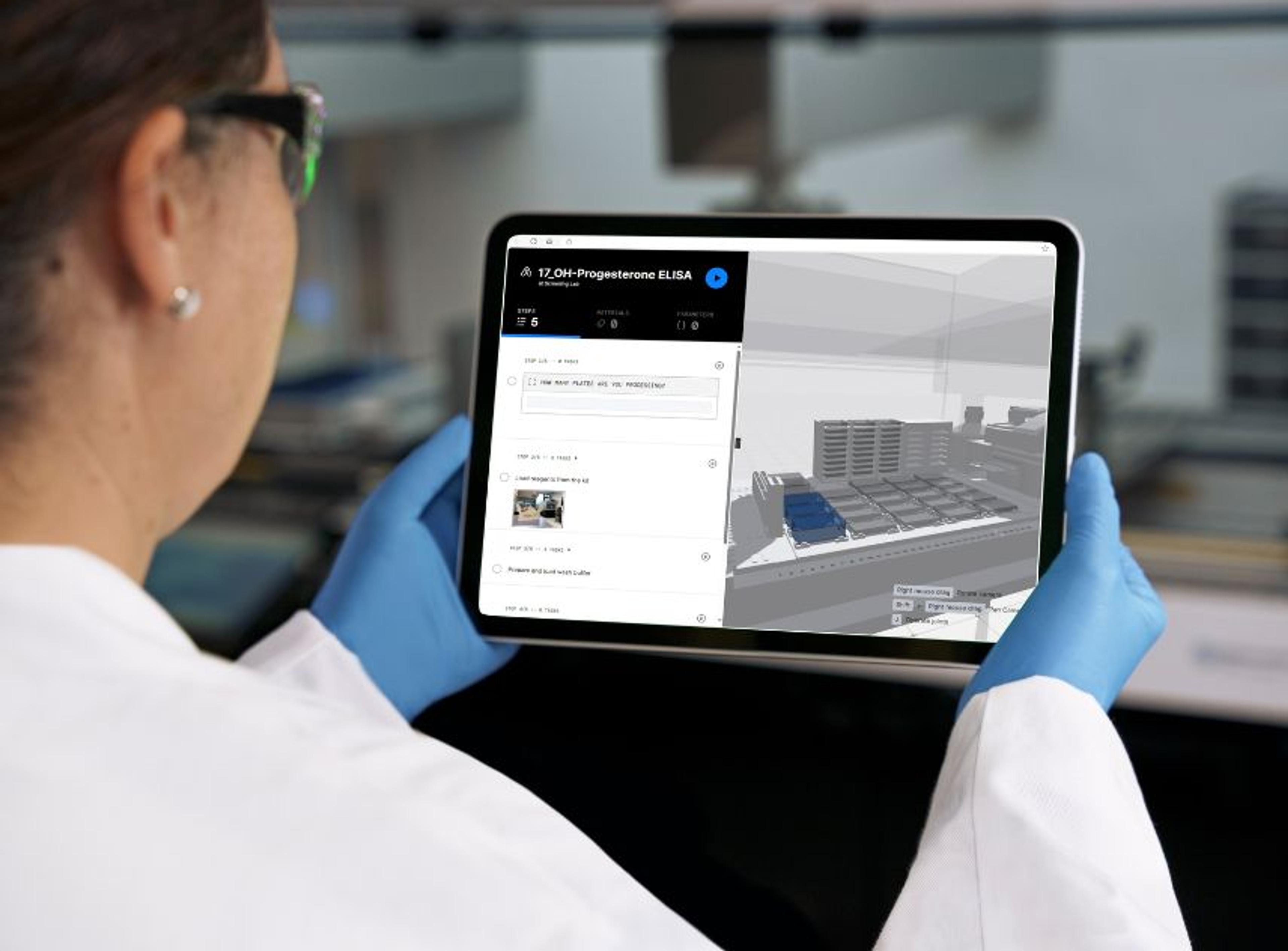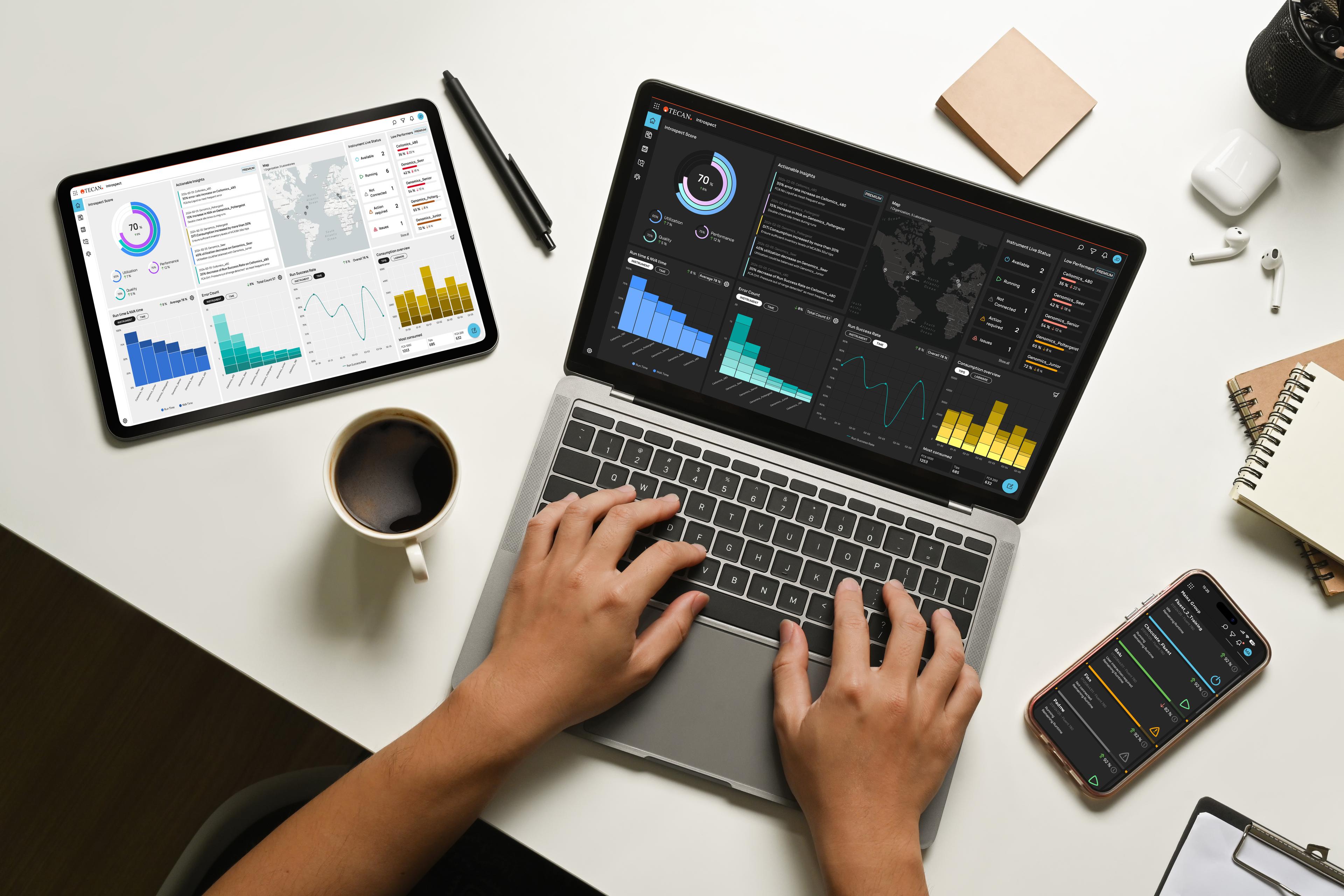How to build the interconnected lab of the future
Tecan experts share how to empower your lab by digitalizing the instruments and labware used in your workflows
27 May 2025
What are the benefits of an interconnected lab?
The growing complexity of scientific research, coupled with the demand for faster, more reliable results, has made interconnectivity in and between labs more urgent than ever. Modern labs are no longer isolated environments – they are ecosystems where instruments, data, and personnel must work in harmony to accelerate innovation.
Digitalization and AI-driven tools are playing a pivotal role in transforming these labs, enabling seamless equipment integration, workflow automation, and real-time insights into operations. By embracing these technologies, labs can enhance productivity, reduce errors, and focus more on the science, creating a future where efficiency and discovery go hand in hand.
The goal of the interconnected lab is to streamline workflows into a single, cohesive ecosystem and ensure scientists focus on science by empowering lab personnel, enhancing equipment efficiency, and fostering a future-focused lab.
1. Digitalization empowers lab personnel
Automation and AI have the potential to revolutionize lab environments by reducing manual workloads, streamlining complex tasks, and enabling personnel to focus more on high-value scientific activities, and LabNavigator™ from Tecan is no exception.
This intuitive, cloud-based platform is designed to streamline the entire workflow. It provides a "single pane of glass" for operating and programming experiments that involve both manual and automated steps. This approach reduces the complexity typically associated with managing heterogeneous systems, enabling scientists to focus more on their research rather than system integration.
Learn about LabNavigator™2. Digitalization enhances equipment efficiency
By integrating automated equipment with software solutions, labs can achieve a new level of precision, speed, and reproducibility. For example, Tecan's portfolio offers systems that allow seamless data flow between devices, minimizing the risk of human error and enabling researchers to focus on high-value tasks like data interpretation and experimental design.
Introspect™, Tecan’s lab insights platform, focuses on optimizing the use of lab equipment by delivering actionable insights into fleet-wide operational equipment effectiveness (OEE). Lab managers can pinpoint inefficiencies and bottlenecks by tracking equipment utilization, quality, and performance, allowing them to improve equipment uptime, reduce costs, and maximize the return on investment. Introspect provides remote diagnosis capabilities, leveraging digital twins for real-time support and proactive maintenance, to minimize equipment downtime. This ultimately enhances lab productivity while reducing operational costs.
Learn about Introspect™3. Digitalization fosters a future-focused lab
Building the interconnected lab of the future involves more than just upgrading technology; it is about creating a cohesive, automated ecosystem that empowers researchers to unlock new scientific possibilities. By leveraging advancements in artificial intelligence (AI), big data analytics, and automation, researchers can enhance collaboration and communication, both within and across teams. This interconnectedness enables real-time data sharing and analysis, allowing scientists to make informed decisions swiftly and effectively.
Moreover, a digitally advanced lab fosters a culture of innovation, encouraging researchers to explore new scientific possibilities that were previously unattainable. Automation streamlines repetitive tasks, freeing scientists to focus on complex problem-solving and creative thinking. Enhanced data management systems facilitate easy access to historical data and experimental results, enabling more efficient experimentation and hypothesis testing.
Ultimately, this holistic approach to lab digitalization not only enhances productivity and efficiency but also cultivates an environment where groundbreaking discoveries can thrive, propelling scientific research into a future brimming with potential.

Digital tools like LabNavigator and Introspect allow scientists to spend less time managing data and more time conducting innovative research. By simplifying complex workflows and ensuring seamless scalability, labs can unlock new levels of productivity, efficiency, and innovation.
How can labs prepare for scaling up capabilities?
Designing your lab and selecting equipment with scalability and flexibility in mind is crucial in ensuring your team can adapt to evolving demands, integrate new technologies, and accommodate future growth without incurring significant downtime or additional costs. As labs expand, scaling up requires a strategic approach that maintains quality and efficiency at every level. As labs grow in size and complexity, LabNavigator empowers new operators by providing clear guidance and applies best practices from other industries, setting a solid foundation for larger operations. Both LabNavigator and Introspect become essential tools for large-scale operations, facilitating the seamless replication and transfer of effective strategies from one lab to another. This flexibility ensures that labs can scale up their operations without sacrificing quality or efficiency.
What is the role of the 'Digital Twin' in modern labs?
The Digital Twin, a virtual representation of a physical lab, is central to Tecan’s digital suite. It allows lab personnel to simulate, monitor, and optimize lab operations in real-time. The Digital Twin helps streamline workflows by guiding lab operators through both manual and automated steps, while also providing lab managers with insights into the state of their instruments. By creating a one-to-one replica of their lab environment, operators can visualize and manage their workflows with greater precision, reducing downtime and increasing overall productivity.
How are industry partnerships fuelling labs of the future?
Creating the lab of the future is not a one-company effort. Partnerships between companies like Tecan and LabForward are essential to building the connected lab ecosystem. Modern labs often rely on equipment from different manufacturers, but Tecan has designed its portfolio to include solutions that bridge these gaps. LabForward’s vision of a lab connected through digital ecosystems—similar to smart home devices—helps achieve better predictive maintenance, reduce operational inefficiencies, and focus on groundbreaking research rather than administrative tasks.
The shared vision of fostering efficiency, reducing manual workloads, and enabling cutting-edge scientific work is driving these collaborations. The goal is to empower lab personnel with the digital tools they need to focus on science, while also ensuring that lab managers can maximize the use of their equipment through smart technologies.
Dr. Dennis Fink of Labforward and Marco Ravot-Licheri of Tecan highlight the importance of a digitally connected lab ecosystem and explore the role of industry partnerships in solving this integration problem.


